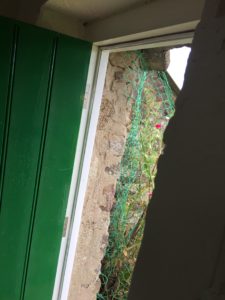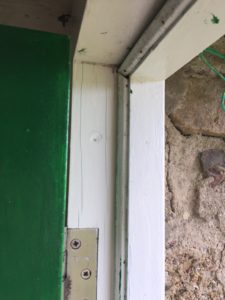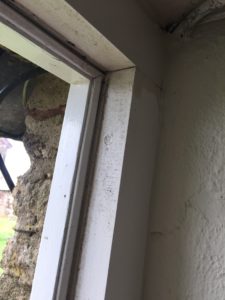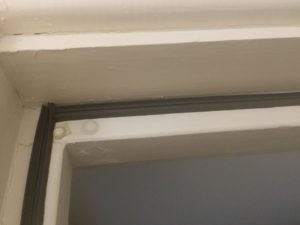A short video of a front door with problems
This is an example of a front door and it exhibits several similar problems
I don’t particularly like cat flaps but this one didn’t seem to be draughty, the door is smaller than normal which is a good thing, smaller = less heat loss and fewer potential draughts.
Lets open it :-
What do you notice? Yes the frame has factory fitted draught strips, look at the second picture, notice how clean the frame and head are, but now look at the third picture. Do you see anything? yes, that is it, not as clean and a bit dusty and dirty. Now lets close the door to see why
 can you see daylight in the crack, the door is shut
can you see daylight in the crack, the door is shut
pressing on the door and the light goes see this little video With the door shut the latch is not holding the door against the draught strips, letting in light and draughts. All that is needed to resolve the problem is the lock keep needs to be inset 3 or 4mm to bring the door tight onto the draught-strip when closed = no daylight visible.
Now, how good were you at observing? was there a threshold strip? No there was only a draught brush, these are OK when it is not very windy but I always prefer to see a threshold with a step in it or weather bat that positively touches the door with some form of compressible strip
If your door does not have draught strips you can fit them. On the hinge side the strip should adhered to the same face as the hinge has been cut into.

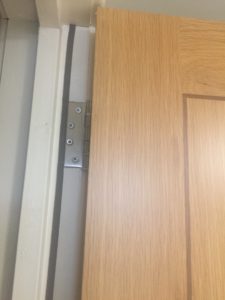
On the latch side the strip should be fitted onto the side of the door stop.
This is so that it is compressed as the door closes. On the head use the same face as the latch side wrapping round the corner to join the one on the hinge side.

Yes I normally use white on white frames but have used brown to enhance clarity.
When shut the door should not wobble. See video . Care needs to be taken to select the correct style and thickness of draught strip. Styles range from thin cheap foam to the butyl rubber ones used here or brush pile, even wedge shaped flap ones are also available.
Thicknesses can go from 1mm up to 6 or 8mm jumbo foam rolls. For gaps thinner than 1mm we apply oil or Vaseline to the door and a thin neat bead of silicone to the frame, close the door and leave it closed for several hours. On opening the sealant perfectly seals the gaps and the oil or Vaseline can be cleaned off which was only there to prevent the sealant stitching to both surfaces. The edges of the sealant can be tidied up with a sharp knife if necessary.


